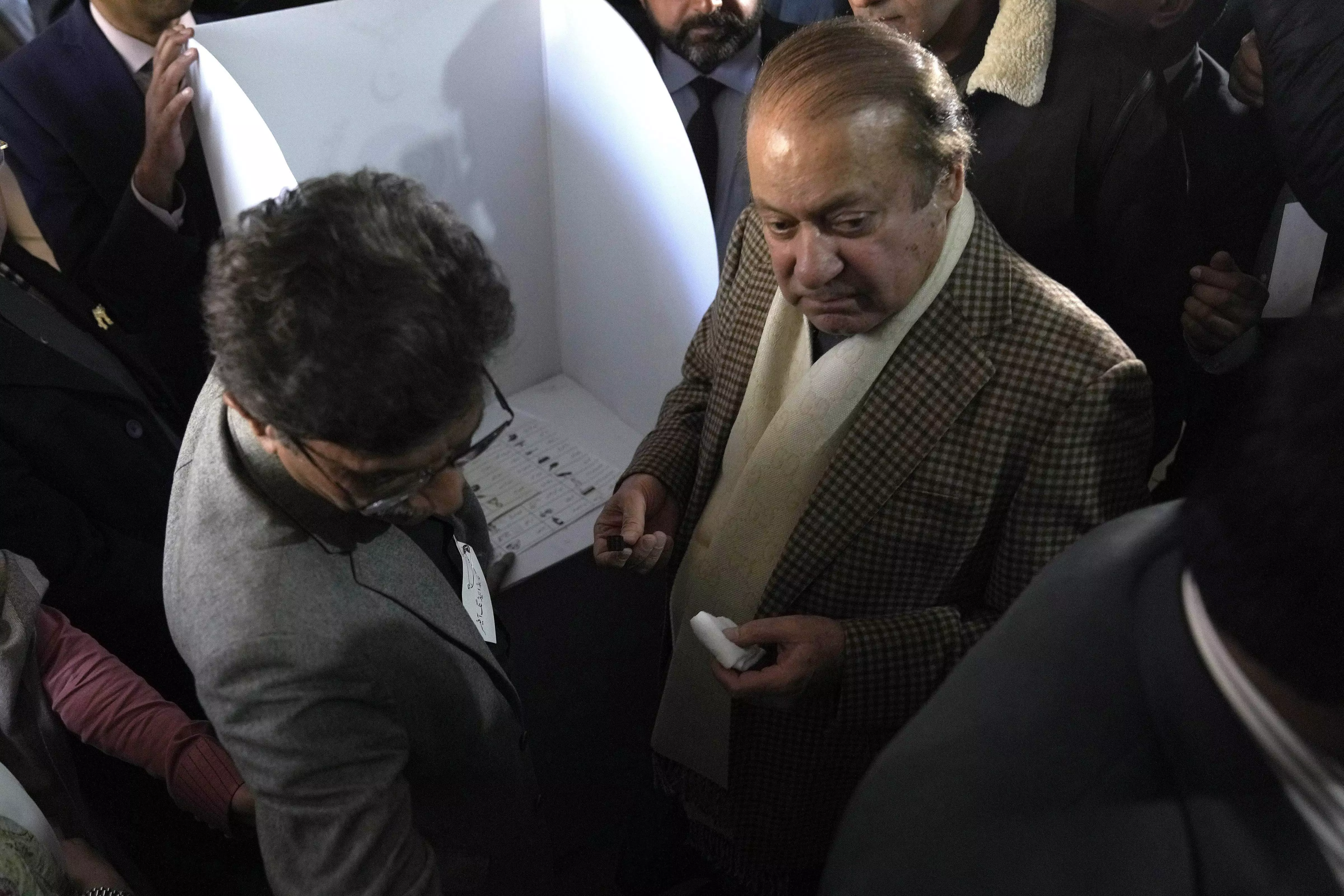
Pakistan polls witnessed 47.6 per cent turnout: Election observer body

Islamabad, Feb 14 (PTI) Pakistan recorded 47.6 per cent voter turnout in the February 8 election, which was lower than the previous one in 2018 when 52.1 per cent of voters cast the ballot, it emerged on Wednesday.
Almost a week later, there is no government in place in the country following the fractured mandate.
The Free and Fair Election Network (FAFEN), an independent election observer body, launched its report about the voters’ turnout in the general elections last week to elect representatives for the national assembly and four provincial assemblies.
According to a report, as many as 60.6 million voters exercised their right to vote in Pakistan’s 12th general elections (GE), showing that nearly 5.8 million more people voted in the elections as compared to 2018 when 54.8 million had cast their votes.
“Despite the increase in the absolute number of voters, the turnout dipped from 52.1 per cent in 2018 to 47.6 per cent in 2024,” FAFEN said, adding that the number of registered voters increased from 106 million in 2018 to 128.6 million in 2024, following a record addition of 22.6 million between the two elections.
The low turnout was due to the harsh winter in parts of the country, fears of violence and terrorism in the restive Khyber Pakhtunkhwa and Balochistan provinces as well as an uncertainty about the conduct of elections may have also adversely affected the turnout, it said.
The FAFEN report is based on the analysis of Form 47 (Provisional Consolidated Statement of Results of the Count) of 264 National Assembly constituencies acquired from the official website of the Election Commission of Pakistan (ECP).
The gender analysis of voter turnout, however, needs further refinement as Form 47 from 10 National Assembly constituencies and as many Provincial Assemblies constituencies did not include the gender disaggregation of votes polled.
The regional disaggregation of voter turnout for National Assembly constituencies shows a varied pattern with the lowest turnout in Khyber Pakhtunkhwa and the highest in Islamabad Capital Territory (ICT).
The turnout in Khyber Pakhtunkhwa declined from 44 per cent in 2018 to 39.5 per cent in 2024, in ICT from 58.3 per cent to 54.2 per cent, in Punjab from 56.8 per cent to 51.6 per cent, in Sindh from 47.2 per cent to 43.7 per cent and in Balochistan from 45.3 per cent to 42.9 per cent.
While overall turnout declined by 4.5 percentage points, the highest decline was in Punjab where turnout dropped by 5.2 percentage points, followed by Khyber Pakhtunkhwa (4.5), ICT (4.1), Sindh (3.5) and Balochistan (2.4).
Among 264 constituencies, the highest turnout was 70.9 per cent recorded in NA-214 Tharparkar-I in Sindh while the lowest was 16.3 per cent in NA-42 South Waziristan Upper-cum-South Waziristan Lower in KP province.
The gender-disaggregated statistics of polled votes indicate a male voter turnout of 51.6 per cent and a female voter turnout of 42.6 per cent. According to the available data, as many as 24.05 women cast their votes in 254 NA constituencies as compared to 34.02 men in the same constituencies.
Interestingly, the increase in the number of women turning out to vote in 2024 as compared to 2018 is greater than the increase in the number of men who cast their votes in 2024 as compared to the previous general election. As many 2.3 million more women turned out to vote in 2024 as compared to 2018 when 21.7 million women had cast their votes.
On the other hand, 1.09 million more men turned out to vote in 2024 as compared to 2018 when 32.9 million men had cast their votes. The number of votes polled by men and women will slightly increase when the ECP makes available the gender disaggregated data of the 10 National Assembly constituencies where the Returning Officers did not separately record the votes polled by men and women.
The decline in turnout as compared to 2018 was a ubiquitous phenomenon across major cities including the provincial capitals Lahore, Quetta, Peshawar and Karachi.
Although the cumulative turnout of all 22 Karachi constituencies saw a declining trend, three Karachi districts namely Korangi, Karachi West (including newly carved out district Kemari) and Karachi Central registered a slight increase in the turnout while Malir, Karachi South and Karachi East recorded a decline.
Unlike GE-2018, none of the National or Provincial Assembly constituencies recorded female turnout that was less than 10 per cent of the total polled votes. Section 9(1) empowers the Commission to declare polling at one or more polling stations or election in the whole constituency void if the turnout of women voters in the constituency is less than ten per cent of the total votes polled.
In GE-2018, two National Assembly and one Provincial Assembly constituency of Khyber Pakhtunkhwa had a female turnout of less than 10 per cent of the polled votes.
In GE-2024, the lowest vote share of women among total polled votes was 18.8 per cent recorded in NA-13 Battagram in KP, while the highest women vote share was 49.5 percent in NA-1 Chitral Upper-cum-Chitral Lower of KP. PTI

